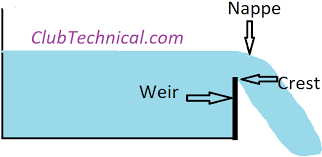PRESSURE AND ITS TYPES
Pressure
is defined as the Force per unit area.
The
SI unit for pressure is N/m2.
Pressure
Formula
The
formula used to calculate the applied pressure is,
·
P = F/A
·
P = mg/A
where,P is the Pressure.
F is
the Magnitude of the Force Applied.
A is
the Surface Area in Contact
Unit of Pressure
The
SI unit of pressure is Pascal (Pa) and is denoted by the
letter ‘p’
Dimension of Pressure is, [ML-1T-2]
We
can easily classified pressure into different categories that include,
·
Absolute Pressure
·
Gauge Pressure
·
Differential Pressure
·
Vacuum Pressure
Atmospheric Pressure
Air
is present above the sea level, the pressure exerted by the air in the
atmosphere is known as atmospheric pressure. The unit used for measuring the
atmospheric pressure is atm.
The
human body also has Pressure inside the body which compensates for the pressure
present in the atmosphere, Therefore, the Human body does not feel it. The
atmospheric pressure varies due to the fluctuation in the atmosphere. The
weight of air is responsible for the atmospheric pressure, and it is essential
for life on Earth.
The
instrument used to measure the atmospheric pressure is called Barometer.
Barometer has Mercury filled, and it is vacuumed in the rest of the space.
Absolute Pressure
Absolute
Pressure is the pressure with respect to Zero pressure present, that is, with
respect to no pressure present in the empty, free space. No pressure is
obtained in a vacuum. Absolute pressure is denoted as Pabs.
Differential Pressure
Differential
Pressure, as the name suggests, is the difference between the two values of
pressure. The pressure obtained will be lesser than either of the pressures and
the unit is the same for the differential pressure obtained.
Pd = P2 – P1
Gauge Pressure
Gauge
pressure is also known as Overpressure, and it is the recently invented
pressure. The differential pressure obtained from atmospheric pressure and
absolute pressure is known as overpressure or gauge pressure.
Below
given figure shows the particular relation among Gauge Pressure, Absolute
Pressure, Atmospheric pressure,
Vacuum
Pressure
The
pressure which is calculated below the atmospheric pressure is known as vacuum
pressure. Hence, the negative value of the gauge pressure is the vacuum
pressure.





Comments
Post a Comment